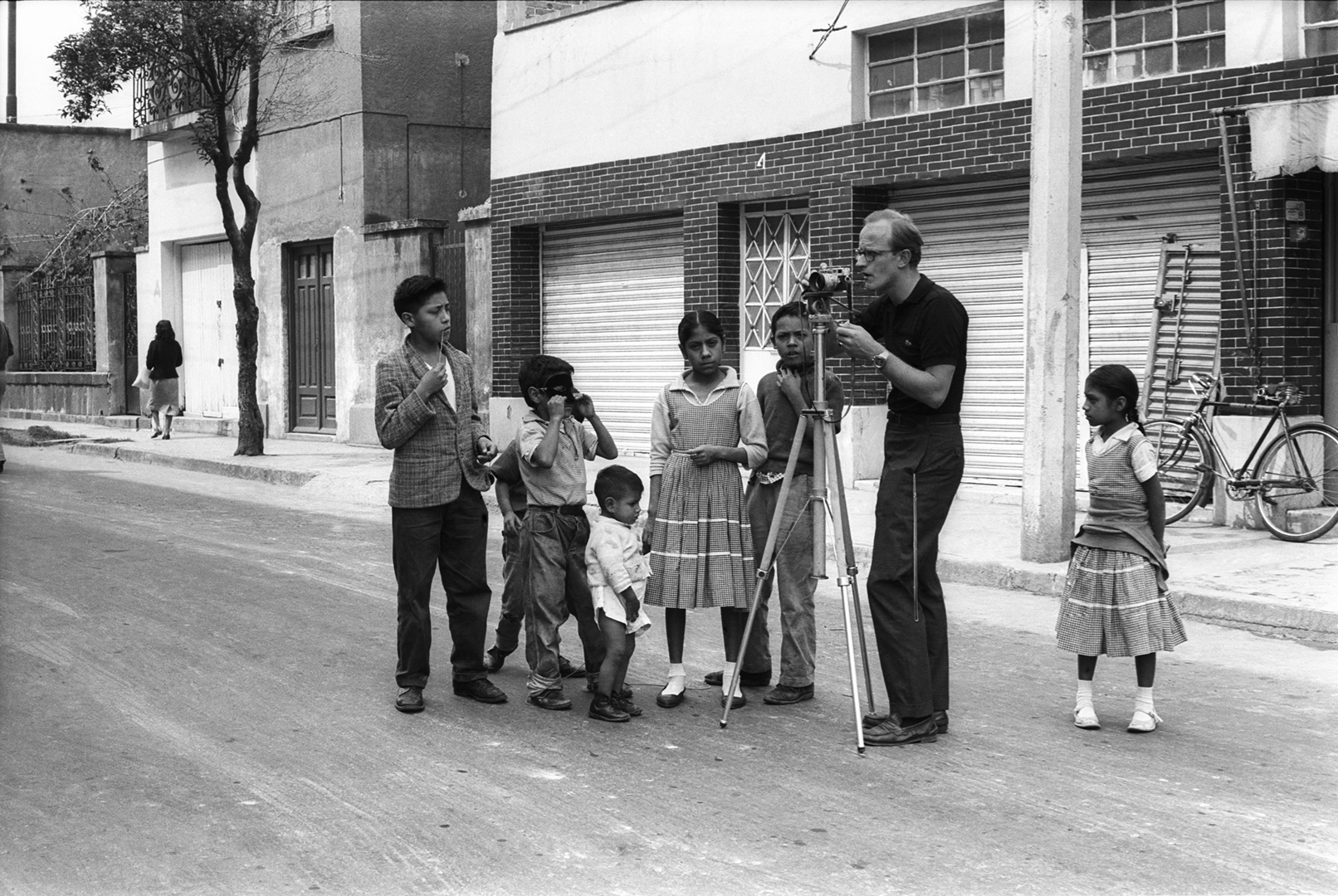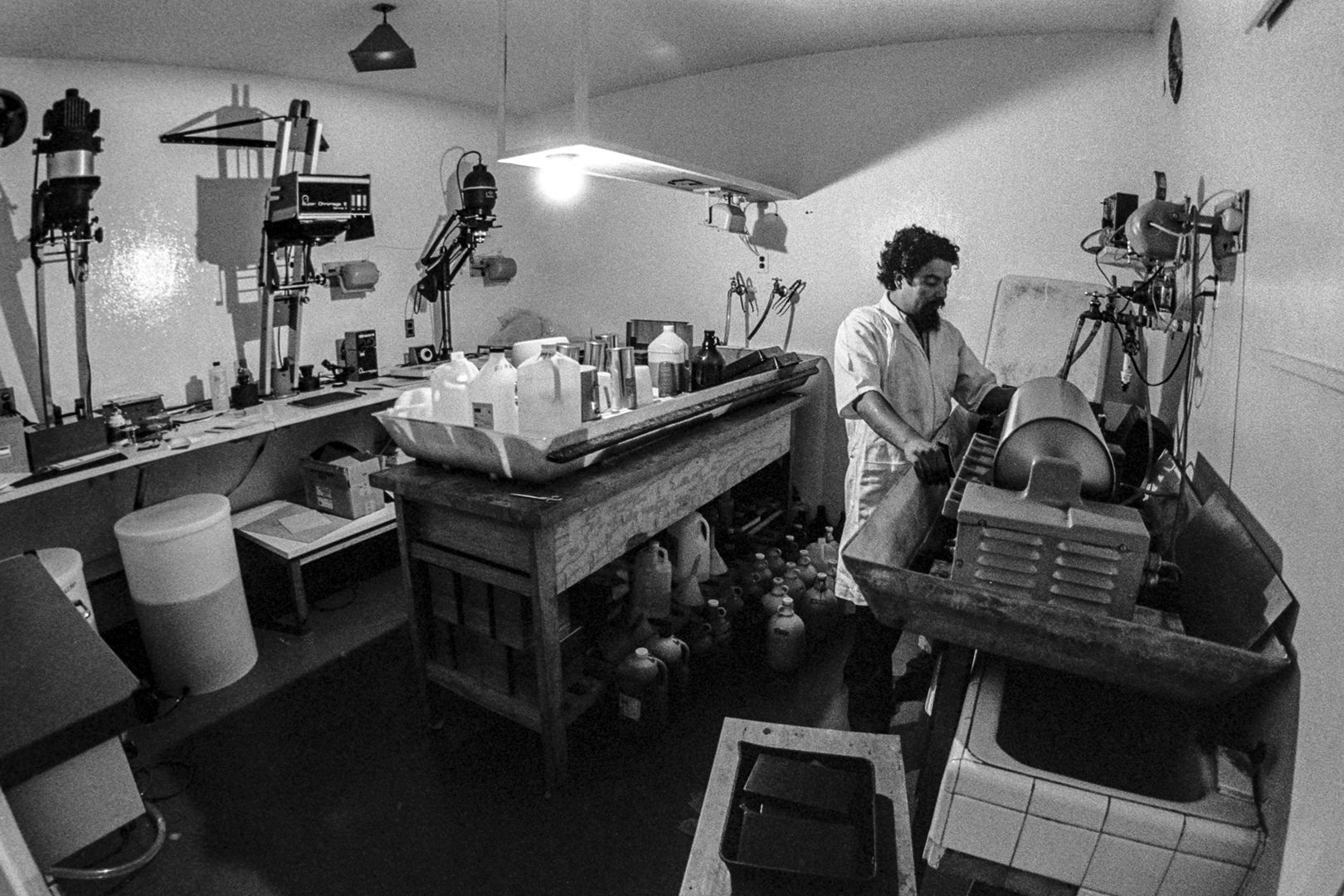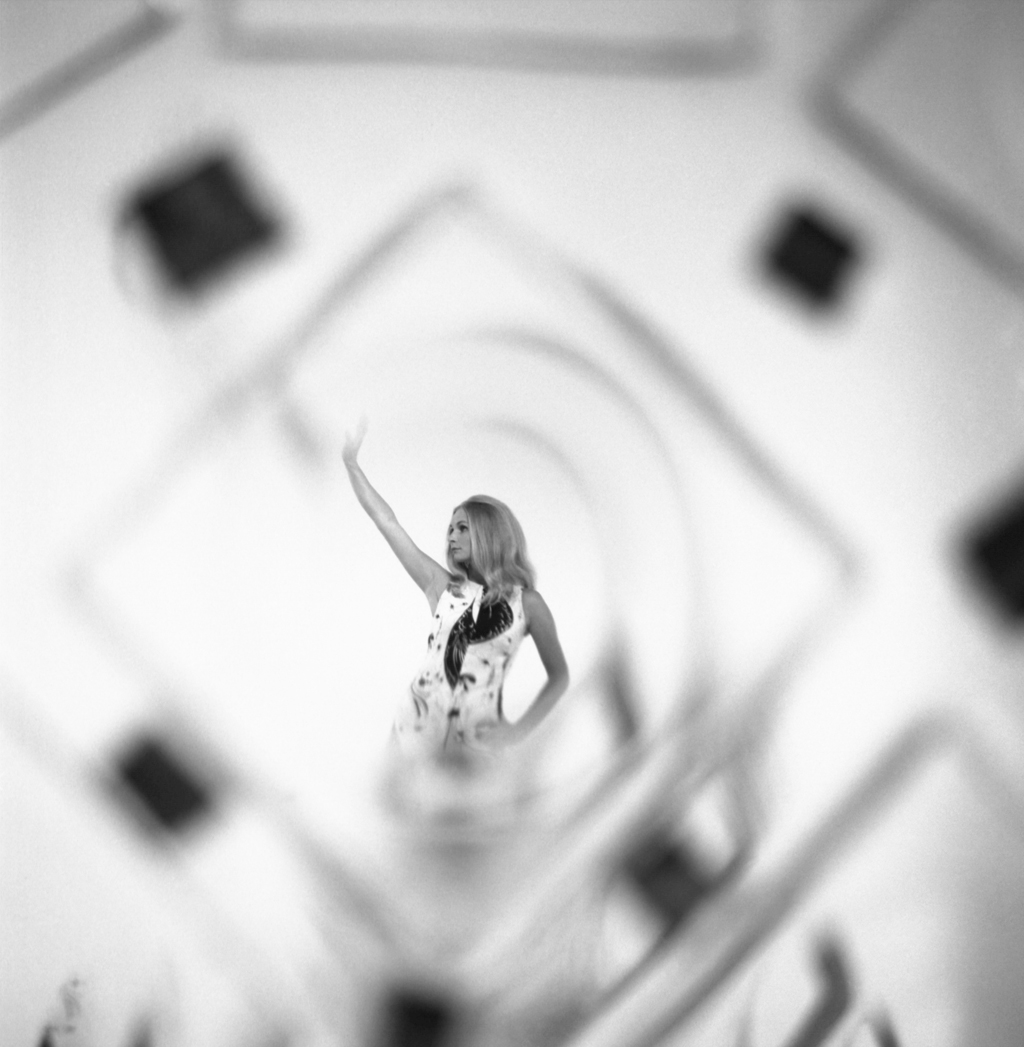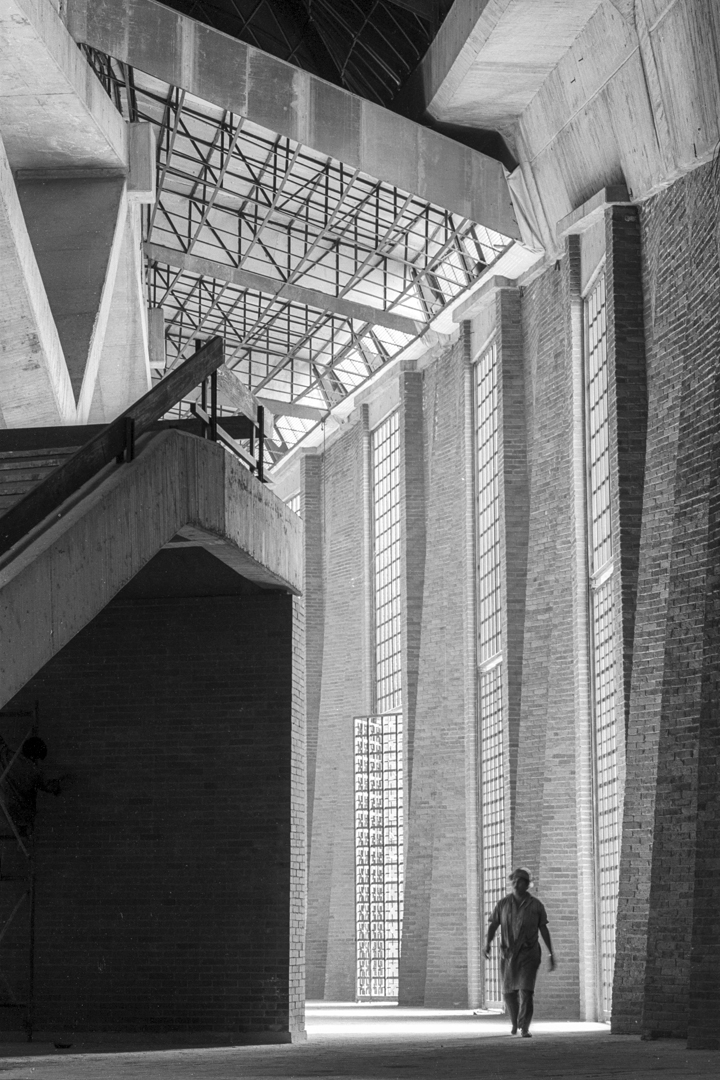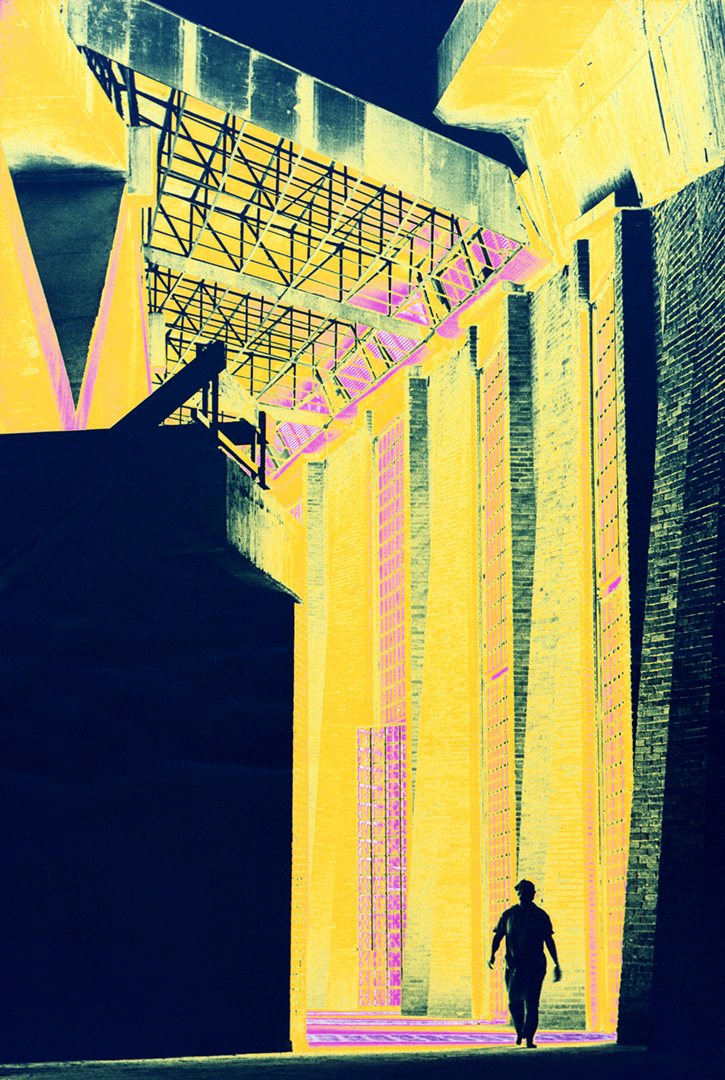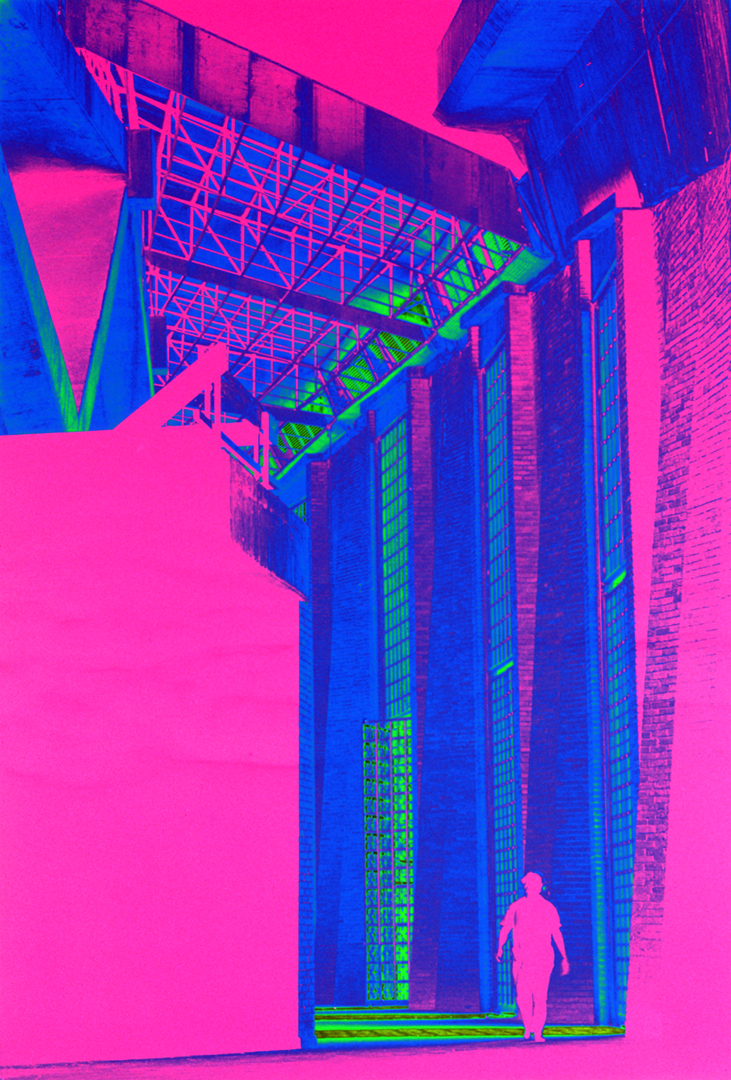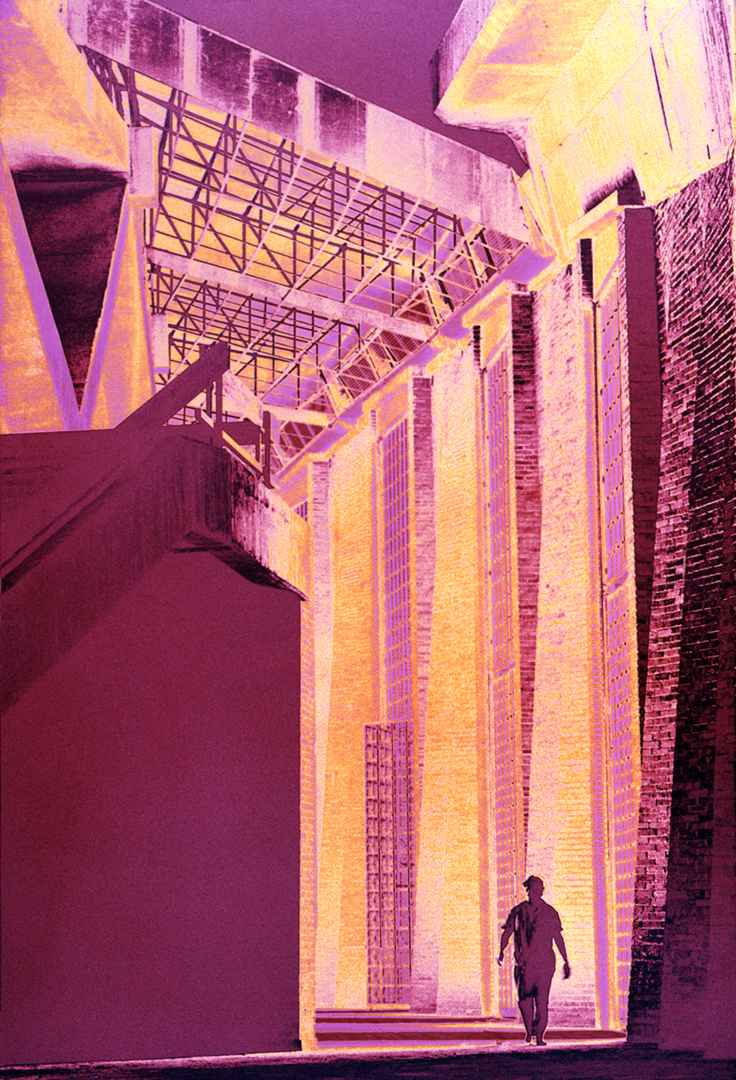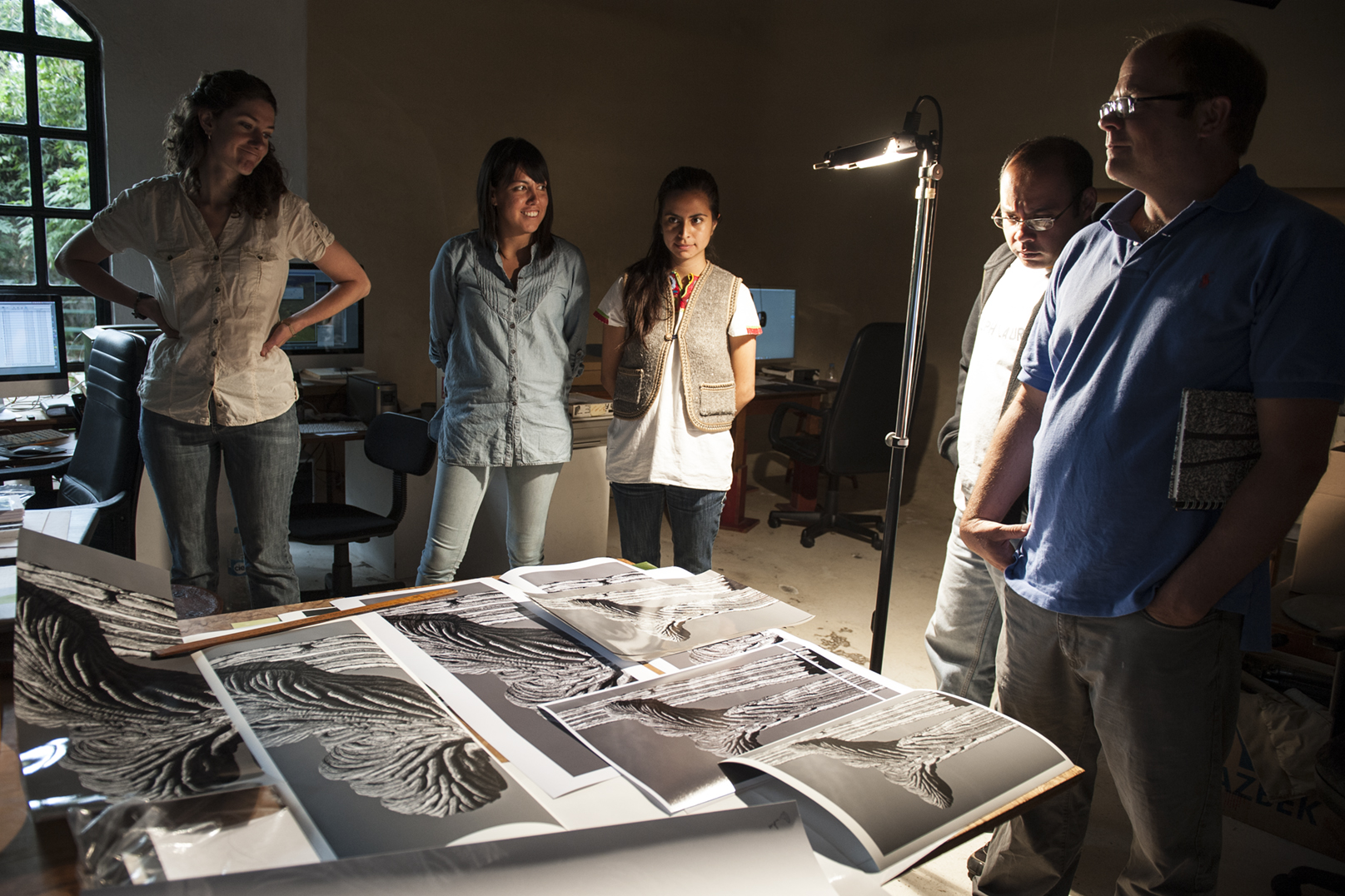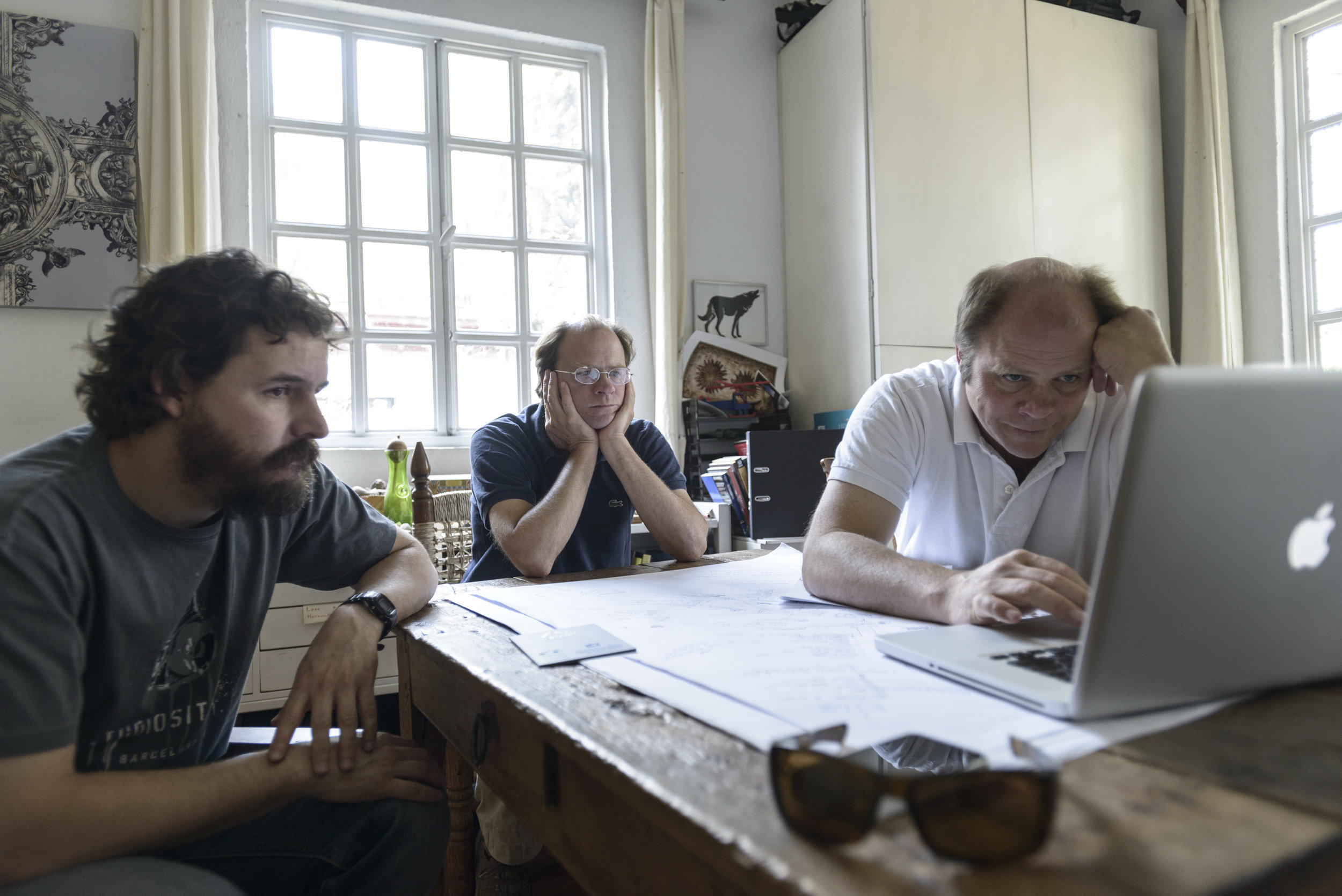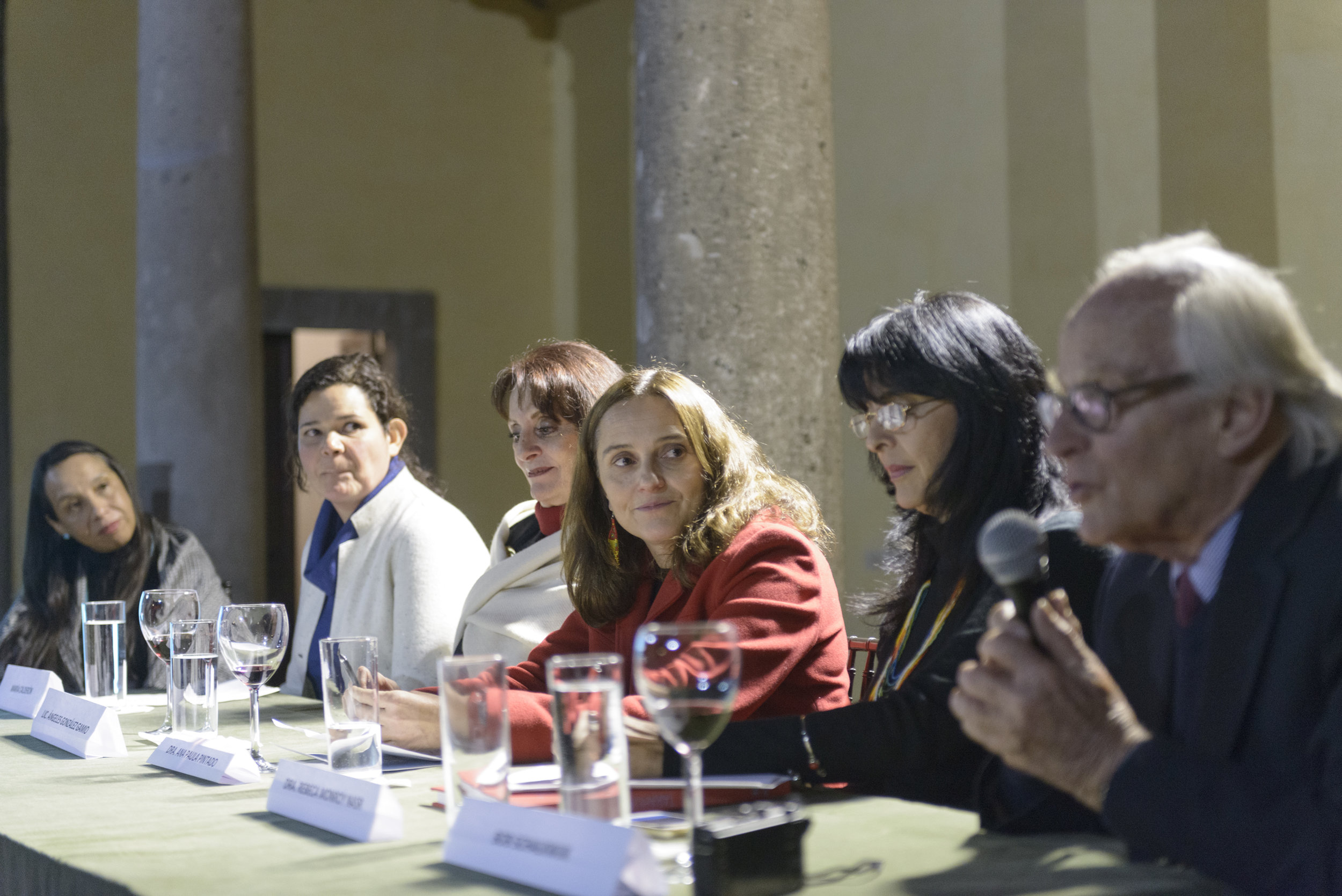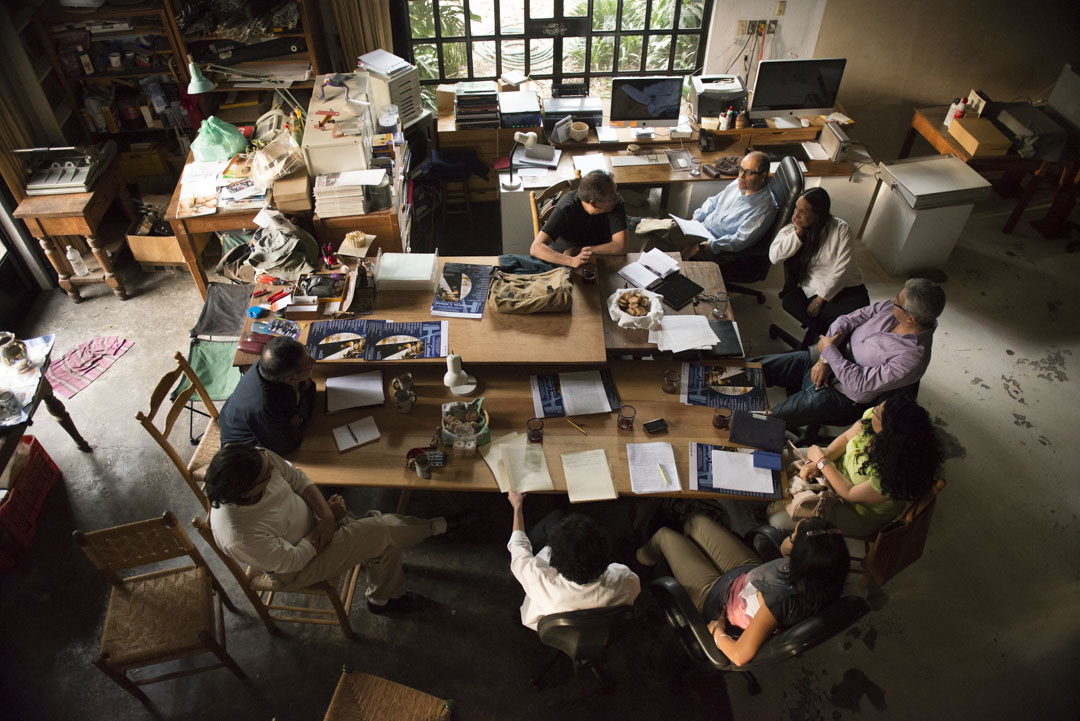A 50 years old photo archive
1963. Schalkwijk is taking a photo outside a bakery, the windows are hand painted with traditional advertising for the seasonal pan de muerto. Curious kids are looking on, one is wearing a mask for its nearly Day of the Death. Bob is using his Leica.
Bob's portrait by Nina Lincoln.
When Bob began to take portraits professionally it was a time when people were still not in the habit of taking pictures for themselves; they preferred to visit a photographer in his studio to have the work done.
Bob didn’t have a studio—he liked to take pictures of people in their own surroundings, doing their usual activities—and that was something original for the time. Like when he photographed many artists and their work, f.i. Roger Von Gunten, Enrique Miralda, and Helen Escobedo.
But not long after he permanently established himself in Mexico and married Nina Lincoln in 1961, they decided to create an archive. From the start- they saw it as a long term project, a photo stock to provide publishers, magazines, newspapers and other clients with images. They saw it as an inheritance for their family to come.
Schalkwijk began, like many photographers, installing a small darkroom in the bathroom of his apartment in Coyoacán, where he processed and printed his first work. Some of his early prints were made and stamped with this first location. It was in 1968 when Schalkwijk finished the construction of a proper studio with two dark rooms, one for processing color and black and white film, and one for enlarging and printing the negatives. Of course, the most important part of the studio was the stage with a cyclorama for shooting models and products.
Bob's Contact Sheet of film #2. Mexico. CA.1961.
Nina and Bob were visionaries about the idea of organising Schalkwijk’s work into an archive that would acquire more value over time. Since he was open to doing all kinds of work (architecture, catalogs, pieces of art, the working process of artists, weddings, travel, society and so on) he created a numbering system to classify the photographs by project, size and type of film. This system is still being used.
The hard work started around the year 1963, when Bob took photographs of Mexico City for an upcoming publication, Famous Cities of the World: Mexico City. This collection of images shows the Schalkwijk's hunting eye for the everyday moments in life, as well as the architecture of Mexico City. Both themes are important nuclei in the Archive.
With only week long courses with Agfa in Germany and Kodak in France, he continued as a self-taught photographer. He worked hard trying to get the best cameras for the diverse jobs he was assigned to. He owned a couple of Hasselblad, 500C and 500EL (6 x 6 cm film, medium format) and Leica M2 and M3 (35mm film) cameras. For Advertising, Art and Historic Documents photography, he used a Sinar C ( 4 x 5" and 5 x 7" format) camera.
By the end of the 60's he started working as a local photographer for the Black Star (New York City) Photographic Agency. Most of the time he photographed industrial as well as medical subjects; important events like the 19th Olympic Games, Presidential Elections, the Pope's visits, and the earthquakes of 1985 to name few.
Publicity and Product Photography
Schalkwijk also worked in publicity. This type of job wasn't his favorite assignment, but brought excellent earnings. The photography of many subjects of different kinds taught him the techniques of product photography which he applied later to the photography of works of art.
Photographs were mainly taken in the studio. He worked with different products such as food, fashion and clothing, beer industry (he shot the iconic blonde models for the Mexican brand Rubia Superior), jewelry, toys, etc. Schalkwijk worked for many years with one of the Mexico's supermarket enterprises AURRERÁ, where he was in charge of photography for publicity and catalogs.
The requirements were nearly always to take a great product shot, which is a challenge,- given the photograph is almost always needed immediately. This led to Bob's study of technique of lighting, composition, and the managing of delicate products such as food and glass. It was a great experience that taught Bob the techniques needed to photograph the important glass art collections for the book El vidrio en México (1990). This collection contained pieces like the rock crystal cup made in Pre-Hispanic times and found in the ****tumba 7*** Monte Alban, and modern pieces of art by artists like Feliciano Béjar and the stained glass murals by Diego Rivera.
The fashion area was not as big as the product shots, but no less significant. Inspired by his many other photographs of products and everyday life scenes, some of his famous and published fashion photos were an experimental mix of fashion aesthetics and Mexican style contexts. For example, Palacio de Hierro launched an advertising campaign with a photo collage. They showed a model wearing an Oscar de La Renta dress with a 16th century wooden door in the background. Another series of photographs were part of the 2015 exhibition El arte de la indumentaria y la moda en México 1940-2015 [The art of dress and fashion in Mexico 1940 -2015] where Mexican dress designer Cuxi von Wuthenau poses with a quarry artisan that happened to be working in the location where the pictures were taken. And then in a series of photographs where Schalkwijk used a Magiscopio (a kaleidoscope type of sculpture by his friend Feliciano Béjar), and photographed Cheki von Wuthenau through it.
Schalkwijk liked to try ideas and photographic processes, he was always reading about new cameras and trends on photography. One example is a series of color solarizations of a black and white 35 mm negative.
Sports Palace Construction. Mexico City. 1963. Original 35mm black and white film and author’s solarisation series.
In the archive there is a big collection of photographic related magazines as well as books on technique and even old photographic paper sample books. There are also the first books given to Schalkwijk in the laboratories where he first learned photography.
He keeps his old cameras. Like the first, a Brownie, and his first 35mm camera with which he took his famous picture: a portrait of Louis Armstrong during a concert in Amsterdam, when he was 16 years old. He sold prints to his friends and earned some money.
Schalkwijk has a very strict, structured and precise way of working, and this is reflected in all areas of the archive: the storage and preservation of film material and vintage prints. Even when cameras are no longer in use, they still function. The same is true for the lighting equipment. Visitors are surprised to see all the equipment is so very well taken care of, regardless of age.
Everyday Life: Mexico and Other Countries
The most important part of the Archive is conformed of three catalogs: Art, Mexico and Countries.
Bob is still a restless traveller and has visited around 45 countries, revisiting his own, the Netherlands, many times. He has taken more photographs of Mexico than any other country. Capturing the life of ethnic minorities, their festivities and traditions all year round. The diverse and amazing landscapes of the many different ecosystems, and of course the pre-Hispanic and Colonial architectural heritage take an important place.
The Archive in the present
The Archive is active. The Archive is a source of images for editors and curators. Schalkwijk has a team working in tasks such as film scanning, digital edition and archive organisation. The interest in the largely unknown Archive keeps growing. The studio is also a place where photographers, history and art researchers, students, art curators, book editors and archiving specialists meet. In the last few years, Schalkwijk's photographs have become better known. The Archive has become an example on how to organise collections of photographs.
